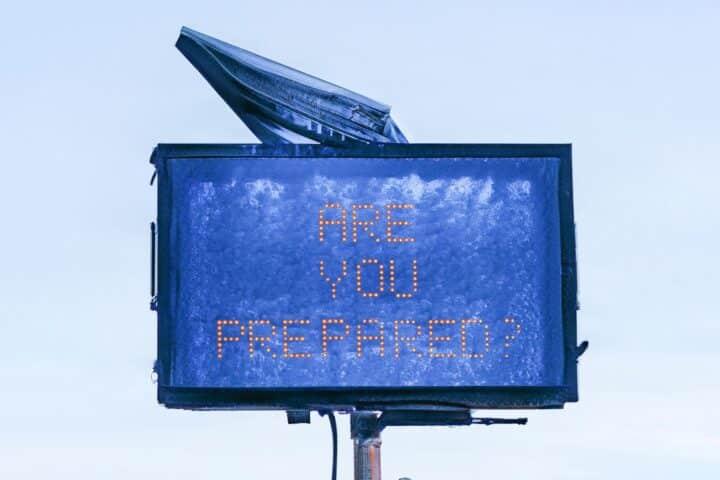It’s snow squall season again! That means it’s time to prepare yourself for sudden changes in weather conditions on the roads, especially if you live near the Great Lakes. The danger these fast-moving events pose during the winter months is real and is the reason why the National Weather Service now issues a Snow Squall Warning to allow you to prepare.
What is a Snow Squall Warning?
We’ve seen a fair bit of confusion on when and for what a Snow Squall Warning is issued, so we went directly to the source. The National Weather Service training manual defines the conditions for a warning as (edited for clarity):
“Weather forecast offices should issue Snow Squall Warnings when there is radar or satellite indication and/or reliable reports of snow squalls meeting or exceeding one or more of the following conditions:
- Visibility of one-quarter mile or less in snow with sub-freezing ambient road temperatures
- Plunging temperatures sufficient to produce flash freezes, along with a significant reduction in visibility from falling and/or blowing snow
Forecaster judgment regarding impacts including time of day, day of week, and other societal factors should be considered.”
NATIONAL WEATHER SERVICE INSTRUCTION 10-513
The Danger Is Real
While it may seem as if the criteria to issue a Snow Squall Warning is really vague, there is a good reason for it. Unlike thunderstorms, convective snow showers (another name for squalls) do not tower tens of thousands of feet in the air.
The National Weather Service Doppler radar system wasn’t built for this use — instead, it was built to work for summertime thunderstorms. Often, the radar beam will completely pass over the precipitating part of the cloud, which shows up as clear air.
Drivers on I-81 near Minersville, Pennsylvania in late March 2022 found themselves in one of these holes. A total of 50 cars were involved in the wreck, including at least five fatalities. And it’s not just in the northeast, snow squalls have caused accidents all across the Northern US.
What to Do When a Snow Squall Warning Is Issued
Like a Severe Thunderstorm Warning or Tornado Warning, Snow Squall Warnings are short-lived alerts typically issued about 15-30 minutes before an event. You will in most cases have sufficient time to prepare. Here’s what to do.
If You’re Indoors During A Snow Squall Warning
- Stay Informed: Keep a close eye on local weather updates. Mobile weather apps and weather radios are excellent tools for real-time information.
- Prepare for Power Outages: Snow squalls can bring down power lines. Ensure you have flashlights, batteries, a first-aid kit, and a supply of water and non-perishable food.
- Keep Warm: Have extra blankets and perhaps a safe, alternative heating source like a wood stove or fireplace.
- Communicate: Let friends and family know you’re safe. Use text messages or social media to conserve phone battery life during power outages.
If You’re On the Road During A Snow Squall Warning
- Give Yourself Extra Time: If a snow squall warning is issued, delay your travel plans. If you must travel, inform someone of your route and expected arrival time.
- Emergency Kit: Keep an emergency kit in your vehicle. This should include blankets, water, snacks, a flashlight, a first-aid kit, and a snow shovel.
- Reduce Speed: If you’re caught in a squall, reduce your speed significantly. Maintain a safe distance from the vehicle in front of you.
- Pull Over Safely: If visibility is near zero, find a safe place to pull over and wait out the squall. Avoid stopping on the roadway or shoulder, as this can lead to accidents.
- Stay in Your Vehicle: If you’re stranded, stay in your vehicle. Run the engine periodically to keep warm, but ensure the exhaust pipe is clear of snow to avoid carbon monoxide poisoning.
Snow squalls, though brief, can be extremely dangerous due to their sudden onset and severe impact on visibility and road conditions. By understanding what a snow squall warning is and following these safety tips, you can protect yourself and your loved ones during these unpredictable winter events.



